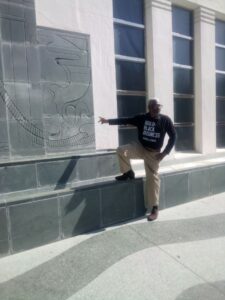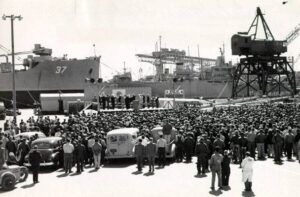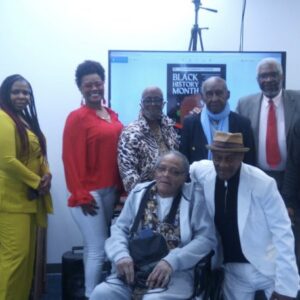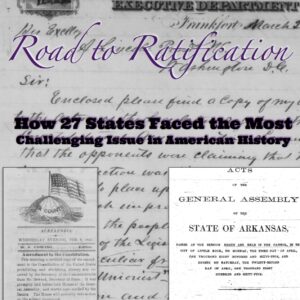Description
New buildings are usually built on the sites of past construction, particularly in the United States’ metropolitan areas. Congress passed the National Historic Preservation Act in 1968 to insure that the most significant historic structures are not just razed, particularly since it requires 50 years for most places to qualify for registration.

John William Templeton, creator of the California African-American Freedom Trail and founder of the Journal of Black Innovation National Black Business Month, describes how $3.5 billion worth of African-American property was taken by public action, without public input from the most # communities, in San Francisco, and how this became a model for the entire country during a pre-conference presentation before the Conference on Architecture, AIA23, on June 5 at 1 p.m. Eastern with a replay on June 6 at 1 p.m. Eastern.
He is also chair of the Central Brooklyn Economic Development Corp. serving Brownsville, the densest population of African-Americans in the nation and the densest population of public housing in the world, in Brooklyn. Brownsville was featured in the New York Times on Sunday, June 4 for the success of an experiment where the community responded to 911 calls instead of police. Under the #OWNBROWNSVILLE initiative, Central Brooklyn and its partners in the Brownsville Hub Collaborative and the Equity and Environmental Justice Center have systematically defined how to create economic stability in the neighborhood for the current residents. It is the complete opposition of prevailing wisdom that more police create public safety.
Central Brooklyn breaks ground on the Glenmore Manor mixed use development including an 18,000 sq. ft. Bville Hub as the headquarters for the effort this summer.
As author of Come This Far By Faith: African-Americans 1980-2020, a 40-year longitudinal look at more than 150 cities, Templeton explored the transition from most African-Americans living in census tracts that were 100 percent Black in 1980, when he wrote his first book, the Illustrated National Guide to Black Households, against his personal journey as a Black newspaper editor for the past 50 years.
As White House reporter for the AFRO-AMERICANS, he was first to write about Black History Month in 1976, conducting an investigation that led to the construction of the Schomburg Center in Harlem in 1981. He then conducted an oral history investigation of five Southern states from D.C. to South Carolina as a graduate research associate for the Department of Black Studies and School of Journalism at the University of North Carolina-Chapel Hill, leading to a two-part documentary We Wish to Plead Our Own Cause on the UNC Television Network in 1978. As editor of the Winston-Salem Chronicle, he researched and wrote The Roots of Black Winston-Salem and then became editor of the oldest Black newspaper in the country, the Richmond AFRO-AMERICAN and Richmond Planet for its centennial edition in 1983. In Richmond, he was president of the Jackson Ward Project Area Committee, which led to the Jackson Ward National Historic District, the largest such district in the nation.
He is considered one of the top experts on the methodology of an authentic history of African-Americans, designated in 1994 as the wanadu aroo, or history advisor to the Amiru Songhoy, Dr. Hassimi O. Maiga, direct descendant of Askia Muhammad, the 15th century ruler of the Songhoy Empire, two and one half times larger than the current United States.
In 1991, he wrote Our Roots Run Deep: the Black Experience in California, Vols. 1-4, winner of the Sesquicentennial Commendation from the California Sesquicentennial Commission and the Library Laureate from the Friends of the San Francisco Public Library.
Vol. 3 of Our Roots included The Cutting Edge of Black Urban Removal, an analysis of how African-Americans went from being the second largest group in San Francisco with the most affluent Black middle class in the nation in 1980 to the most dramatic displacement of any metropolitan area in the country.
In a preliminary session for his two presentations of the California African-American Freedom Trail June 7-10, he gives the background for how more than 400 sites in San Francisco have not been placed under historic preservation and why the 6,000 sites statewide include more than 3,500 structures designed by Black architects and relates it to the national theme for the 20th annual Journal of Black Innovation National Black Business Month, Capitalizing Our Heritage.
In the annual scientific proceeding of the Journal of Black Innovation in 2021, members of the 50 Most Important African-Americans in Infrastructure set a goal of protecting African-American historic communities to create the opportunity for economic development that benefits the long-time residents.
Those neighborhoods have been targeted over the past 40 years because African-Americans were concentrated along waterfronts because of their traditional careers in maritime professions for 200 years. In the Bay Area, African-Americans dominated the shipbuilding industry and longshore from the general strike of 1934 through the 1970s. Now that land, which contributed to the American victory in World War II, is being coveted for development.
Merely clearing out African-Americans as disposable is ultimately counterproductive because even gleaming buildings lose their luster when dispossessed persons sleep in their doorways. Templeton often has to step over persons when entering his office in the East Cut area, where billions of investment have created 50 story buildings which sit vacant because companies are leaving the city.
Templeton is defining a new paradigm that fulfills the promise of the 14th Amendment, the most significant political accomplishment of African-Americans following their victory in the Civil War.





